
Many transportation bigwigs came together around a table inside the EcoTrust building in the Pearl District this morning for a meeting of the Regional Tolling Advisory Committee. On hand were RTAC members including: a VP of the Portland Metro Chamber, the director of the Oregon Trucking Association, the directors of the Oregon and Washington transportation departments, several Metro councilors, commissioners from Multnomah and other counties, etc.
The Street Trust Executive Director Sarah Iannarone, also an RTAC member, was only able to attend via Zoom. Why? Here’s how she opened one of her comments:
“I’m sorry I’m not there today. The bike lanes aren’t quite as clear as the motor vehicle lanes, so it’s not super safe for me to be commuting down there. So I appreciate you allowing me to Zoom in.”
Yes, the good news is this tragic and terrible storm is behind us. But the bad news is — just like the trauma and damage this storm inflicted on many Portlanders will linger — so too will terrible bike lane conditions and dangerous roads that put everyone outside of a car at risk.
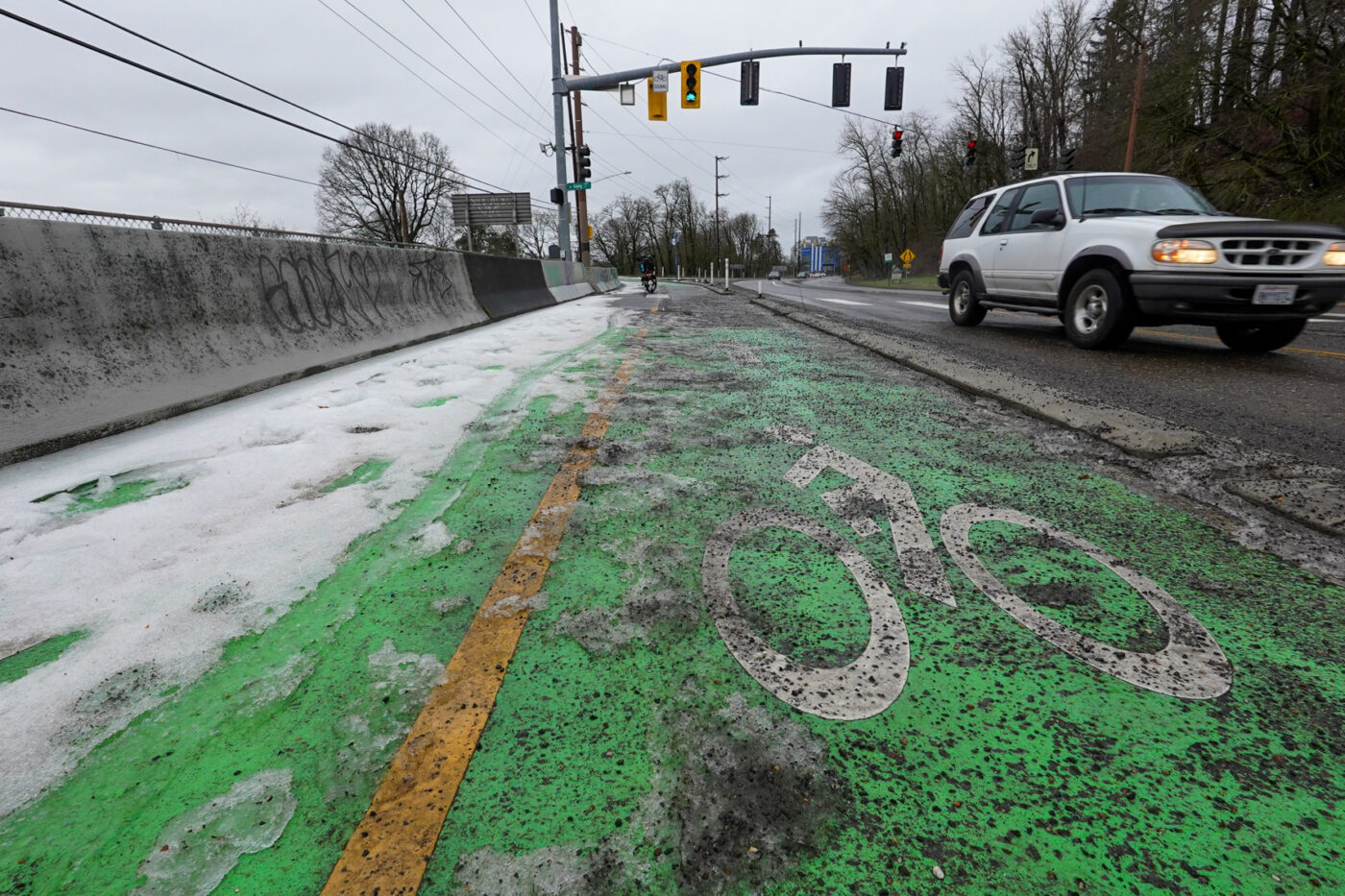

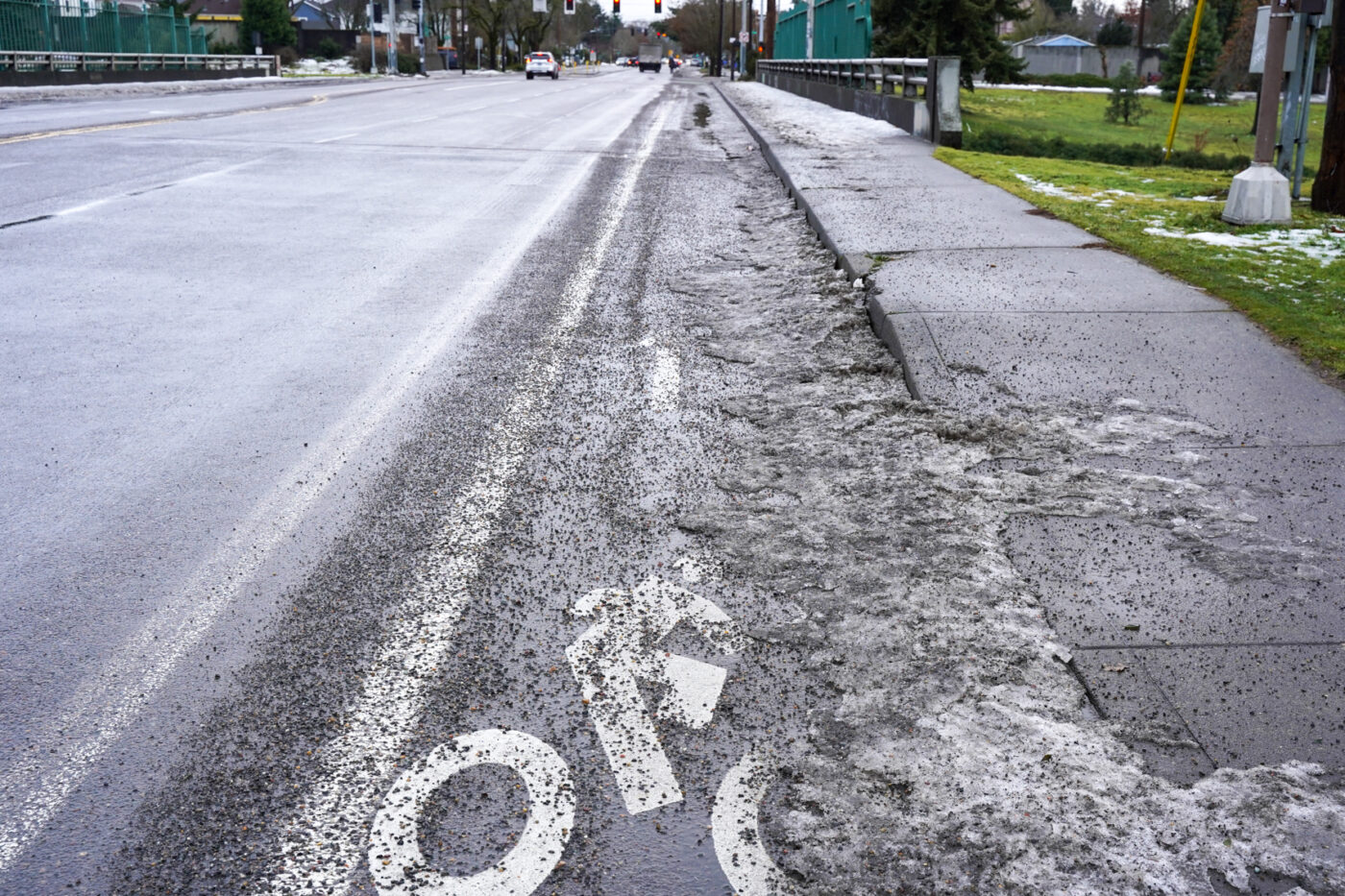

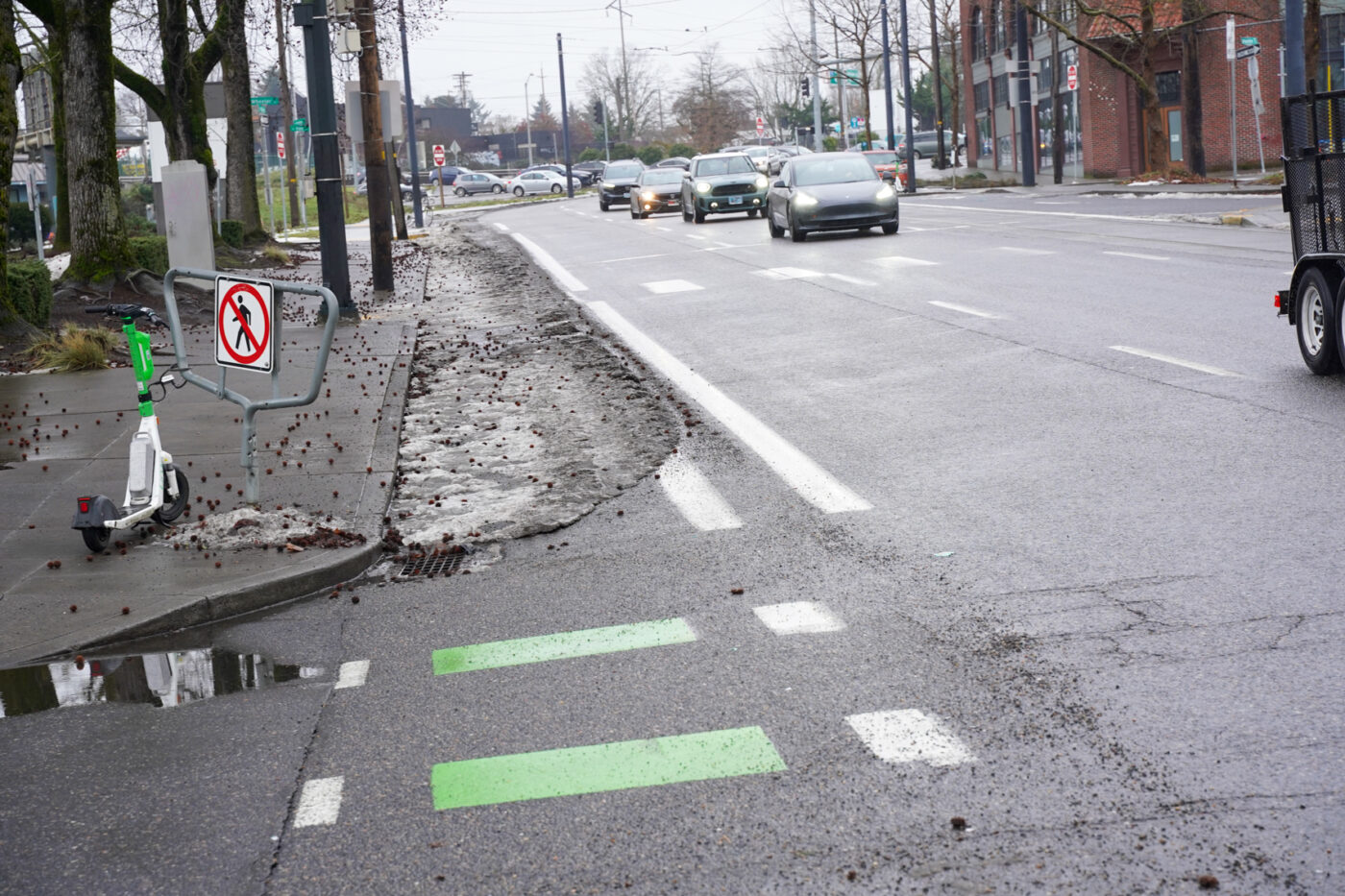
“It’s really dangerous for people cycling on streets right now,” Iannarone shared from her personal X account a few minutes ago. “A lot of pent up demand and frustration from motor vehicle operators, plus seriously hazardous bike lanes, still quite icy and strewn with debris.”
I rolled out for a loop from north Portland down town the Broadway Bridge on Sunday to document conditions. Thankfully, much of the snow and ice I biked through has mostly melted away by now, but the debris and gravel remain. People who are out on bikes are forced to make difficult decisions: brave huge puddles, slippery gravel, branches and clumps of snow — or share adjacent lanes with other road users.
One of our readers, Carlosb_music, shared via an Instagram comment today that, “I was forced out of the bike lane and into the traffic lane due to the gravel and ice and was almost side-swiped twice this morning.”
Portland bike riders like Carlosb_music, Iannarone, and many others are so desperate for cleaner and safer travel lanes that one local activist went so far as to tell us about the sale of an old PBOT street sweeper at auction. Turns out it’s the same Ravo sweeper I wrote about on here 10 years ago when PBOT first added it to their fleet. In that story I shared how PBOT purchased it specifically for its small footprint and ability to sweep inside narrow, protected bike lanes.
When I saw it pop up over the weekend, some local riders said they wanted to purchase it. The current bid is $1,300 — a fraction of what a similar model would sell for (new or used). According to the listing, the sweeper has 34,291 miles on it and its sweeper has been run for 1,958 miles. Whether someone wins the auction and whether they follow through with using it to clean public right-of-ways (which would open up a whole other issue and not be appreciated by PBOT I’m sure), remains to be seen.
For their part, PBOT says the old Ravo sweeper is “at the end of its usable life” and they’ve already got a replacement ready to go. Hopefully, once they’ve caught up with the vast amount of work created by this major storm, they’ll get the new one out on the road to suck up all the gravel, twigs, and other debris that makes riding in bike lanes more dangerous than it should be.
Whatever happens, from the look of some of our city’s bike lanes, I’m not surprised folks are putting in bids to buy an old sweeper. Every time PBOT lays down gravel, it takes a very long time to clean it up. The gravel is deployed just to make sure drivers can continue to use the roads for a few days — but the impact to bicycle (and other mobility device) users can last months.
This year, I plan to more than just watchdog PBOT’s response. Like other Portlanders who’ve literally taken this issue into their own hands, stay tuned for BikePortland to help organize some mass deployments of citizen sweeping brigades citywide. Got a broom?



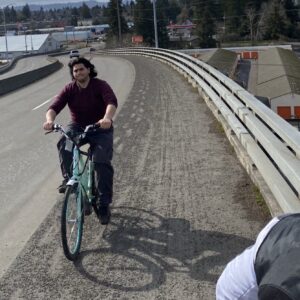
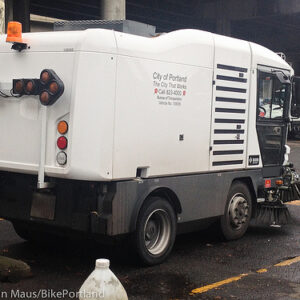
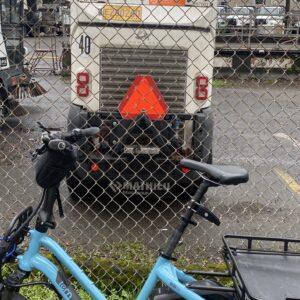
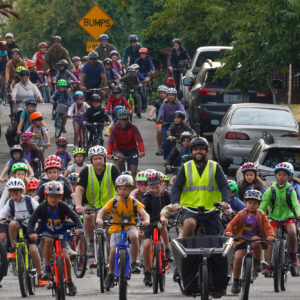
Thanks for reading.
BikePortland has served this community with independent community journalism since 2005. We rely on subscriptions from readers like you to survive. Your financial support is vital in keeping this valuable resource alive and well.
Please subscribe today to strengthen and expand our work.
Just as information for anyone riding out in Clackamas:
Lake Road bike lanes have only light grit/gravel and a patch of heavy slush at the start in Milwaukie, Harmony is pretty rideable to 82nd and you need to stay on the sidewalk half of the Sunnyside path because slush blocks the bikeside ramps in many places.
South of Sunnyside on the 205 path and the 224 path are very clear.
(this is from the perspective of a road bike with 28mm tires – There’s so much water and road grit kicked up after one of these that I keep the trike at home)
In North Dakota we called the one-month season between the bitter cold of winter and the budding greenery of spring, the Mud Season. Everything looked like crap, lots of slush, melting, ice at night, very hazardous conditions for all users, plus the spring flooding every April – the last piles of snow in supermarket parking lots was gone by May or early June.
Added to my list of reasons to never live in the upper Midwest.
I don’t recommend it. I myself made a bad choice in parents as I happened to be born there. It does have a few good points though, aside from building lots of character – my home town had special snow equipment for cleaning sidewalks and the extensive city network of paved bike paths, which in winter were also used as snowmobile bypasses (for the river snowmobile highway). The city also required that every new development had to have sidewalks, curb ramps, street lights, sewers, water, and paved streets completed before a single house could be built. The city also built massive floodwalls and dikes. We even had flush toilets, Amtrak in the wee hours, and public transit.
Hahaha! I hated the first winter thaws in March in Grand Forks! I was so desperate to get out and ride, braving just slightly above freezing temps splashing through puddles and trying to avoid all the gravel. twice, I had my derailleur cables freeze under the BB shell and my downtube shifters would try to move but the cables were frozen.
The Sellwood Bridge has gravel all over the sidewalk (which allows bicycles) as well as the bike lane that is on the roadway. So, dangerous or dangerous are the options there — unless a cyclist exercises their legal right to bike in the motor vehicle lane because of hazards in the bike lane, in which case one can only imagine the resulting behavior from motor vehicle drivers incensed that they have to go at a slightly slower pace just to keep another member of the community safe.
Maybe if we start a pool now to guess when the gravel will all be cleared up, the winner will make enough to be a small fleet of bike land cleaning machines??? Or just hire folks with brooms????
Sidewalks on Sellwood Bridge seemed to be half-swept this morning, Lois. See my comment below. You obviously have some pull at PBOT.
Correction: Does MultCo maintain this bridge?
That’s interesting… was a PBOT employee using it to commute?
more likely the sweeper was driven around a lot without the sweeper actually in use. Makes sense.
Given PBOT’s demonstrated commitment to keep the streets clean, it does.
But that’s, if I’m understanding this, 32,333 more driven & not sweeping miles than driven & sweeping miles. How? That makes absolutley no sense! If you’re not sweeping, why drive this? I understand that there would be a bit of a mileage discrepancy, but not 32k miles difference. So for real, was a PBOT employee using this as a daily driver? A totally bananas theory for sure, but for real, what the hell is up is with this??
Just guessing that the sweeper is a replaceable part, like tires.
Given the low mileage, it sounds like PBOT is treating the entire vehicle as a replaceable part.
Wow! That means it was actively sweeping for only 5.7% of its life! (1958/34291).
You’d think they’d just have this thing just sweeping on some kind of regular route. I get that it probably fills up with grit and needs a support vehicle to empty the crud into, so then it can only be sweeping for certain distances at certain places at certain times.
Imagine a world with a frequently/constantly running bike lane sweeper that just drops little piles of dirt on the side of the road as needed, and then a follow truck rolls through awhile later and picks up all the little piles. Sigh…
If people go to the link, you’ll see that the “1958” number refers to hours the sweeper/broom thing was running, not the milage. This is compared to a stated 5201 engine hours. So, it was actively sweeping for 38% of the time the engine was running. Seems reasonable to me assuming this thing travels to and from its home base under its own power and that its travel speed is pretty low, say 20ish mph.
I think your first line makes more of an impact if you rephrase it like, “of the 34,291 miles on this sweeper, it was only actively sweeping for 5.7% of those miles” Makes this seem more outrageous to me anyway.
Regarding the 10 YO working sweeper, I hope the sale is prudent for PBoT…and that it is not the only “spare” bike lane sweeper that they have in case the new one goes out of service (repairs or maintenance) etc.
Quite likely the purchase of a new one with federal and state subsidies/incentives is far less than repairing the old one, much like it is with fire trucks and buses.
DH: very true…I was just pointing out that I hope they have a Plan B (or a Sweeper B).
The gravel can get bad on sidewalks, too, when streets that already were graveled get re-plowed. That stayed through summer last year in places.
A related problem are all the drifts of ice and snow flanking every street or driveway that gets plowed. They can last long after the rest of the snow and ice melt, and can block both ends of every crosswalk, and every bus stop, on a plowed street.
The worst offenders to me are businesses that scramble to plow their parking lots and driveways, and not only don’t shovel their sidewalks (legally required), they create drifts of snow blocking sidewalks where they’ve plowed their driveways. (And the worst of the worst are news stations that do that while they’re reporting on how hard the snow is making things for people!)
The new bike/ped sidewalks on SW Capitol Hwy are covered in gravel and tree limbs. When the project was nearing completion last year, PBOT sent a hilarious communication to residents saying that the requirement to clean the sidewalks was being “waived” until construction was complete – a clever way of reminding property owners of their requirement to keep sidewalks clear.
Now that the project is done and property owners ARE required to clear these sidewalks, will PBOT enforce the requirement? I doubt it but I hope I’m wrong.
I got a gravel bike for the bigger tire clearance so I could tolerate the rough roads on Portland Greenways, but hey, it works on this too. Now every ride is a gravel ride!
This was a really corny thing for her to say. Between the bus, MAX, and the streetcar, there are like, 8 transit lines for getting from the Lloyd center, where The Street Trust offices are located, and The Pearl. Looking at the list of attendees for that meeting, I’m seeing only organizations that are, at best, neutral on bike infrastructure, and at worst, actively hostile toward it. We always beat our chests about how investing in active transportation makes the whole system more resilient. Saying “I couldn’t get to this meeting because there’s snow” to a room full of transportation power brokers makes that entire argument fall flat.
Yes, the bike lanes need to be cleaned, but we also need to be realistic. Ya’ll realize that the same PBOT workers that are responsible for clearing bike lanes have been out there for the last week risking life and limb so that emergency, transit, and delivery vehicles can get where they need to go? Sheesh. Give ’em a break.
Not that a walk from 5th to the Pearl is onerous, or that it wasn’t a corny comment but Lloyd and the Pearl are surprisingly poorly connected by transit – just the 77 and Streetcar do so directly and both run at about 20 minute headways.
The Pearl, and especially the part of the neighborhood north of Johnson is poorly connected by transit in general, especially within TriMet’s network. Anyone who has lived or has had to commute to this area for work can attest to this. Luckily the 77 will be Frequent Service at some point but that still leaves a large portion of the neighborhood not directly served by frequent transit (and the streetcar doesn’t count).
I’m glad she made the point about how crappy the bike infra is. When I bike to work meetings and everyone is talking about the bad traffic on the drive over, I usually remark on how pleasant the bike ride was.
I was out today briefly around Mall 205 and the bike lanes in East Portland are generally unusable. The sections that are somewhat ok aren’t worth diving into for a block and then back out again. Fortunately I don’t have to bike on too many roads with gutter bike lanes and when I do it’s relatively brief.
A few years back I remember biking around in August and slipping and falling in gravel multiple times.I just started a new job too so it established me as one of those “crazy cyclists” with my coworkers. I suppose, I’ll be changing up my commutes to avoid those lanes till September when they finally get around to sweeping them.
Division bike lanes were a mess before the storm and now it’s almost comical how overfilled with gravel, trash, and dirt some places are.
Seasonal snow removal as part of planned street operations should make things better and not worse. A ‘hippocratic oath’ of sorts that the mitigation is not worse than the problem.
This sadly seems to be a chronic transportation equity issue, especially when management / crews have no real plan (or accountability) for piling plowed snow in big piles at the end of each block where catch basins, crosswalks, ADA ramps are located. Now with protected bike lanes this preplanning (say summer time?) and strategy becomes even more important to think outside the box…like instead of piling snow into the protected bike lane / bus lane or entombing parked car, catch basins, or ADA ramps…how about plowing it to the center lane(s) of the road? Perhaps with such planning there could be staff time cost savings due to minimizing intersection flooding (from soggy leaves, snow and ice)?!
Each winter when I see such behaviours, I feel like it is still 1990 and the ADA law is still new and untested.
Regarding snow removal and the ADA, here is a local example of snow removal gone wrong…a ‘self imposed problem’ as a new more difficult barrier was created.(See photos.) A bike / walk commuter from Vancouver (WA) shared this with me today: the snow plow crews gathered up snow from the car lane and piled it into the crosswalk area week ago: thus blocking the ADA ramp, protected bike lane etc.
In the photo is ‘blind’ pedestrian with a guide dog. They use Columbia Street almost daily (and there is a city park* across the street too). So potentially after 7+ days not being about to walk outside she went out today. Her guide dog would not let her cross the street and she did not know why. That is until a car driver stopped and got out to escort her across the signalized intersection.
*In our neighborhood there are many City of Vancouver facilities (VFD Station, parks etc.) that are not shovelled and cleared during the days after snow events. So this means that they are often the last walking barrier left after the adjoining properties are shovelled. And importantly our community is the host for our state ‘blind school’ for over a century.
That’s a great illustration of what I mentioned in my comment–plowing to clear streets that blocks every crossing, and remains for days after the other snow melts.
All your comments are perfect.
I agree this is a top-class comment. Makes me wonder:
Do snow-plow operators get any training in where to put the snow?
BP story idea??
What would the public do with the gravel they sweep up? PBOT sorts and reuses it, don’t they?
I grew up in Cincinnati and none of these snow and ice events would’ve had the same impact with regards to gravel, because there (and then) salt was used in quantity to help melt snow and ice and keep roads more clear. Since it dissolves in water it also doesn’t accumulate on the road in the same dangerous manner. This method is not without drawbacks of course, and may not even be legal in Oregon (no idea but it seems plausible given the environmental impacts).
I imagine PBoT or whoever runs the plowing will tell us they don’t have money to both lay down gravel and pick it up, maybe salt is a cheaper solution? Are commenters here anti-salt? Why does nobody mention it?
PBOT does use salt, but only sparingly in specific locations. From their website:
I value ecological justice infinitely more than the desire of ‘murricans to make trips every day of the year. (We need mandatory compensation for lower-income people who have missed work due to weather-related emergencies but the complaints of economically privileged people who were not able to make it to the grocery store to buy kale or gourmet coffee are frivolous.)
https://www.nytimes.com/2022/01/07/climate/road-salt-water-supply.html
https://www.discovermagazine.com/environment/why-road-salt-is-bad-for-the-environment
Salt used to be banned in parts of Oregon b/c of the impacts on water quality. But after an incident (in 2015?) where a school bus went missing til 9pm, legislation was passed to allow the use of salt on roads. (I hope someone can supply the history here.)
The problem with salt here is that Portland has constant freeze-thaw cycles, which makes salt not very useful, unlike the Midwest, which stays consistently cold. I grew up in the cold Northeast, where winter is much easier b/c it snows and the snow stays hard-packed – as it did in Portland for about two days last week. Then the freezing rain messed things up.
People who say Portlanders are wusses who can’t deal with winter conditions don’t appreciate how much icier it is here than in locations like the Midwest and Northeast where it stays more consistently cold.
PBOT needs to stop calling them “bike lanes” and call then what they really are:
Snow-storage lanes.
And after the snow is gone:
Gravel-storage lanes.
I’d argue that the lanes are mostly good for storing microaggressions.
Your comment feels a bit like a microaggression, but I’m not sure.
Then it definitely is one.
Don’t forget leaf season!
This is far less relevant of an issue now that most of us are on large-tired electric bikes. Gravel doesn’t bother me. I don’t have to pedal and I barely have to steer.
That may depend on where you are. Year-round, ebikes are still the minority on the main route near me (but it is a MUP, not a street).Or it could be that when the gravel comes out, many people without ebikes with large tires stop biking.
It does raise a scary question, though–if ebikes do fine with the gravel (I don’t know) and PBOT and others see them out riding through the gravel, will they decide the gravel isn’t a problem, it’s the people who insist on riding old-fashioned bikes–putting one more nail in the coffin for people not riding ebikes?
Most of who?
I personally prefer to pedal and while my tires are probably larger than average, 48mm isn’t what I’d call “large.”
Your e-bike is a motorcycle, and will soon be regulated as such (license, registration, road test, etc).
The gravel might not bother you when you’re not having to pedal or steer, but it will when you have to stop suddenly and you slide out and it lodges in your thigh and hip.
Yeah this is real. A few years ago I got run off the road by an aggressive driver and ended up crashing. I fell on pavement that was covered in gravel. In addition to breaking a couple bones, some fine medical workers got to spend close to an hour picking little bits of gravel out of my various wounds. Made me super thankful that local anesthetic is a thing.
I can’t be sure (Poe’s law) but I think the comment was satire, making fun of e-bike riders (the not having to steer is the hyperbole that makes it clear). I disagree with the sentiment either way though.
Who is “most of us”. I still see about 90% normal bikes in NE Portland. I bike park almost daily at Fred’s, New Seasons, etc. There are rarely any e-bikes at the racks.
I don’t see e-bikes on the greenways either. Just regular folks riding regular bikes .
The revolution that never happens.
E-bikes get stolen first.
Thank you for writing this! I was feeling insecure about how… insecure I felt riding on my commute! All of Vancouver, from the Slough to the Esplanade, is covered anywhere from a quarter inch to an inch of gravel. I’ve been riding on the white stripe and in the passing lane but cars are so big now that they take up those spaces too. I also didn’t know that they “graveled” the streets! It’s amazing that this city has exactly One plow and exactly One street-cleaning vehicle. Keep us updated on those citizen brigades! I have access to a few push brooms
I crossed the Sellwood Bridge this morning, E to W, and it appeared that a small sweeper had made one pass in each direction, on the sidewalk only. The bike lanes are still a mess, so everyone was on the sidewalk. Nice to see that someone gave the sidewalks some attention, though we don’t know who.
PBOT’s publicity machine could do a much better job of sharing basic info about what they are doing – little things to help cycling, like “Our sweeper hit streets x, y, and z yesterday.” Not the big, splashy news releases they always put out, but something we could follow that is not Twitter / X (I’m not putting more $$ in Musk’s pockets).
I recrossed the Sellwood Bridge in the afternoon, going W to E. A crew of four men with gas-powered leaf-blowers was busy removing gravel from both sidewalks, which were clean as a whistle when they were done! – tho the bike lanes were now even more full of gravel, cuz that’s where they were blowing it.
I’m thinking PBOT couldn’t possibly respond so quickly. Is it possible MultCo maintains this bridge and hired a crew of groundspeople to maintain the sidewalk? If so, they did very well, though now they need to address the bike lanes.
I carry a broom with often now to sweep up accident debris while riding. Need a shovel for the gravel.
We are looking forward to hearing more from your squeaky wheel.
Ride safe
I saw a PBOT mini sweeper drive past on N Rosa Parks yesterday. It seemed that they had just swept the bollard delineated bike lane, as it was free of gravel, except for a thin strip in the middle of the lane that must be the gap between the rotating brushes.
It looked exactly like the sweeper pictured above at the auction site. Strangely enough, even though the auction is now live (8:28am 1/25), the sweeper is no longer listed. Either the new sweeper is the same model as the old one, or maybe they withdrew it from the auction after public criticism?